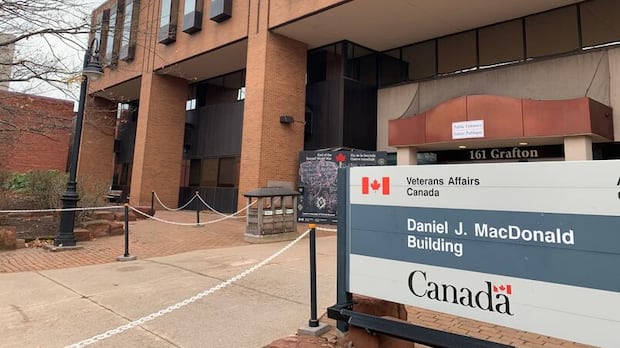PEI·NewThe federal government is set to slash 16,000 positions — or about 4.5 per cent of the public service workforce — over the next three years and it’s not yet clear what that might mean for P.E.I. where the federal government is one of the largest employers.Cuts announced in federal budget expected to begin in April and continue until 2029CBC News · Posted: Nov 05, 2025 11:11 AM EST | Last Updated: 16 minutes agoListen to this articleEstimated 5 minutesVeterans Affairs and the Canada Revenue Agency are two of the largest employers in P.E.I. (Laura Meader/CBC)The federal government is set to slash 16,000 positions — or about 4.5 per cent of the public service workforce — over the next three years and it’s not yet clear what that might mean for P.E.I. where the federal government is one of the largest employers.According to the federal budget announced Tuesday, the reductions are expected to begin in April 2026 and continue until 2029.Public Service Alliance of Canada Atlantic regional executive vice president Chris Di Liberatore said that target doesn’t include contract or temporary positions and comes on top of the nearly 10,000 jobs cut in 2024-25.He said it’s not yet clear exactly how the cuts might impact departments like the Canada Revenue Agency or Veterans Affairs, two of the largest employers in P.E.I.“We are looking at the budget document, we are trying to figure out exactly how departments will be impacted and what departments will be impacted greater or to a lesser degree,” he told Island Morning host Mitch Cormier.“So while we’re looking at this document and seeing where the numbers fall, we’re figuring out exactly how it is that we’re going to deal with the numbers that we’re facing.”The budget aims to offset the reductions where possible through attrition and voluntary departures, but Di Liberatore said a cut is still a cut.“That’s still a job that’s not being re-filled, it’s additional work that’s going onto the plates of the folks that are delivering these services, which is just going to lead to higher volumes, longer wait times for services that Canadians rely on,” he said.“It’s going to impact the health of our employees — they’re going to be burning out at a faster rate when we’re asking them to do so much more with less … There’s younger folks who are disproportionately affected when these situations happen because the jobs available to them to start a career are not there any more.”Members of the Public Service Alliance of Canada went on strike in 2023. Here, picketers are seen outside the Jean Canfield Building in Charlottetown. (Steve Bruce/CBC)Di Liberatore believes the federal government is putting its focus in the wrong place.“We know that during times of economic uncertainty that investing in the public service helps get us through those downturns,” he said.“Especially now since COVID has opened up a world of people working remotely, it’s put a lot of workers into rural communities that would normally have had to relocate into urban centres, and we really believe that if the government embraced more remote work they could find the savings that they’re looking for without impacting the workforce or the salary and benefit line.”Dalhousie University political science professor Lori Turnbull said it’s too soon to say how the reductions might impact individual departments but it’s likely to mean changes to the programs currently offered — and the elimination of others altogether.“I don’t think we have the level of granularity on that to know exactly what’s going to happen,” she said. “But could mean that we see changes in terms of the services that are offered at the federal level whether it’s tax services, passports, that kind of thing.”The budget also lays out a plan to hasten the wider adoption of AI technology across the federal government — a plan Di Liberatore worries is premature.“Canadians don’t want to talk to a machine. They don’t want to deal with AI chatbots,” he said.“At the end of the day, this technology that has yet to be fully developed is intended to replace workers and that’s just unacceptable.”He said tools should be used to help people work more efficiently — not replace them.“AI can’t make a decision, and AI doesn’t have compassion,” he said.“Let’s look at somebody who recently lost a loved one who is reaching out to the pension centre for assistance with the death benefits they may be entitled to. AI is not going to be able to provide that person with the service they require with the level of compassion that they may need in that moment.”Turnbull said it’s not clear how long it might take to implement AI technology across the federal government, or how it might be used.“So we’ll see whether they are able to keep up with developments in AI so that services actually get better despite the fact that there are cuts.”WATCH | Federal budget includes public service job cuts, more AI use:Federal budget includes public service job cuts, more AI usePrime Minister Mark Carney’s first budget proposes $60 billion in savings and cuts, including a plan to reduce the size of the federal public service by 40,000 positions over five years.
Uncertainty for P.E.I.’s federal public service employees as Carney plans to slash 16K jobs










